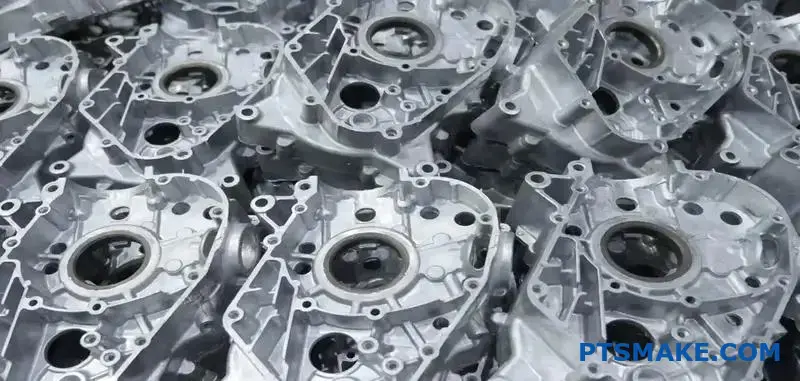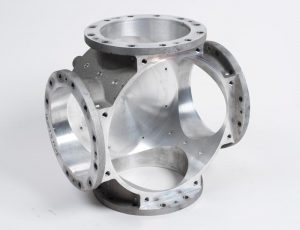Understanding Quality Control in Aluminum Foundry
Wiki Article
Aluminum Casting Techniques: a Deep Dive Into Materials and Methods for Success
Aluminum casting strategies play a necessary role in production. Numerous approaches exist, each matched to various applications and demands. Sand casting is favored for larger elements, while die casting is recognized for its precision in high-volume manufacturing. Financial investment casting uses detailed designs with exceptional finishes. Comprehending these differences can substantially affect job end results. Aluminum Foundry. Selecting the proper technique is not always uncomplicated, leading to important considerations that have to be checked out further.Understanding Aluminum Casting: A Review
Aluminum casting is a vital manufacturing process used across different industries to develop complex parts with high precision. This approach involves pouring molten aluminum into a mold and mildew, enabling it to solidify and take the shape of the preferred part. The versatility of aluminum, incorporated with its lightweight and corrosion-resistant residential properties, makes it a perfect selection for applications in vehicle, aerospace, and consumer products.Numerous casting techniques exist, each fit to certain needs and project ranges. Elements such as mold and mildew products, cooling rates, and the complexity of the layout play a substantial function in determining one of the most effective technique. Furthermore, the residential properties of the aluminum alloy made use of can influence the final product's durability, strength, and surface area surface.
Comprehending the basics of aluminum casting enables suppliers to maximize production procedures, reduce waste, and guarantee top notch output, which is crucial in today's affordable market.
Sand Casting: Methods and Applications
Amongst the various strategies utilized in aluminum casting, sand casting sticks out because of its versatility and cost-effectiveness. This approach entails developing a mold from a combination of sand and binder, which can be formed to accommodate complicated styles. When the mold and mildew is prepared, liquified aluminum is poured into it, permitting for elaborate attributes and details to be caught.Sand casting is particularly advantageous for generating large parts and low-volume production runs, making it suitable for automotive parts, machinery components, and creative sculptures. The method also accommodates a variety of aluminum alloys, improving its flexibility in numerous applications. Additionally, using sand as a mold and mildew product enables for easy improvement and reuse, adding to ecologically sustainable techniques. Achieving high dimensional accuracy can provide difficulties, necessitating knowledgeable craftsmanship and cautious control of the casting process. Overall, sand casting stays a fundamental approach in aluminum shops worldwide.
Die Casting: Precision and Performance
Die casting is a very reliable technique of generating aluminum parts with remarkable dimensional precision and surface area coating. This procedure involves requiring molten aluminum right into a precisely machined mold and mildew under high stress, which enables elaborate styles and minimal product waste. The quick air conditioning of the alloy within the mold results in a strengthened component that typically requires little to no extra machining.Die casting is especially beneficial for high-volume production runs, where consistency and rate are critical. It supports the creation of intricate geometries, making it appropriate for numerous applications, including automotive, aerospace, and durable goods.
Furthermore, the procedure can suit different aluminum alloys, enhancing the mechanical buildings of the completed products. With its capacity to generate light-weight yet durable parts, die casting attracts attention as a recommended method in modern-day manufacturing, supplying both precision and performance in aluminum casting.
Investment Casting: Detail and Intricacy
Financial investment casting, also recognized as lost-wax casting, is a flexible and specific method for generating complicated aluminum parts. This method is especially valued for its ability to develop detailed geometries and great details that are frequently unattainable through other casting techniques. The procedure starts with a wax pattern, which is covered in a ceramic covering. When the covering solidifies, the wax is melted away, leaving a comprehensive mold for aluminum pouring.The benefits of investment casting include premium surface coating and dimensional accuracy, minimizing the requirement for considerable machining later. It is specifically helpful for tiny to medium production runs where precision is vital. This technique accommodates different aluminum alloys, improving its applicability across markets. aluminum casting. Ultimately, financial investment casting stands apart for its capacity to deliver both aesthetic allure and functional efficiency in aluminum elements, making it a recommended selection for designers and designers looking for complex options

Choosing the Right Approach for Your Task
Just how can one identify the most ideal aluminum casting technique for a specific task? The selection procedure pivots on numerous crucial aspects, consisting of the intricacy of the style, the desired surface area coating, and manufacturing quantity demands. For detailed layouts, financial investment casting typically confirms advantageous as a result of its capacity to catch fine information. Alternatively, sand casting may be favored for larger, much less complex parts, offering cost-efficiency and flexibility in manufacturing.In addition, factors to consider relating to tolerances and mechanical residential properties of the end product are crucial. For high-performance elements, die casting might be the very best choice, as it provides premium dimensional precision and surface area top quality. Furthermore, comprehending the product residential properties and compatibility with the chosen method is essential for making sure the success of the job. Ultimately, a comprehensive analysis of these factors will certainly direct the decision-making process, resulting in one of the most efficient aluminum casting technique for the specific task available.
Often Asked Concerns
What Is the Ecological Influence of Aluminum Casting Techniques?
Look At This
Exactly How Can I Improve the Surface Finish of Cast Aluminum?
To boost the surface area finish of actors aluminum, one can utilize strategies such as sandblasting, brightening, and using coatings. Proper mold and mildew layout and temperature level control likewise substantially boost the last surface area quality of the cast product.What Safety and security Precautions Should Be Taken During Aluminum Casting?
During aluminum casting, important safety and security preventative measures include wearing protective equipment, guaranteeing correct ventilation, using fire-resistant materials, keeping a secure distance from liquified metal, and adhering to devices safety and security protocols to stop crashes and injuries.Exactly how Do I Fix Typical Casting Flaws?
To fix usual casting issues, one must check the mold for damage, analyze the alloy make-up, check pouring temperature, adjust cooling rates, and guarantee click to read correct airing vent to minimize air entrapment and enhance casting quality.What Are the Expenses Related To Various Aluminum Casting Techniques?
The prices related to numerous aluminum casting techniques vary considerably, influenced by aspects such as product costs, production, labor, and equipment range. Budget factors to consider are essential for picking one of the most suitable casting method for details jobs.
Sand casting is preferred for bigger components, while die casting is recognized for its precision in high-volume manufacturing. Among the different strategies made use of in aluminum casting, sand casting stands out due to its adaptability and cost-effectiveness. Die casting is an extremely effective approach of generating aluminum elements with remarkable dimensional precision and surface coating. Investment casting, also recognized as lost-wax casting, Aluminum Casting Company is a versatile and precise method for creating complicated aluminum parts. How can one identify the most suitable aluminum casting technique for a specific job?
Report this wiki page